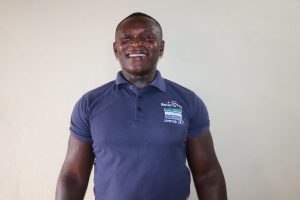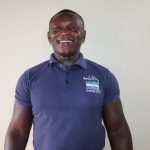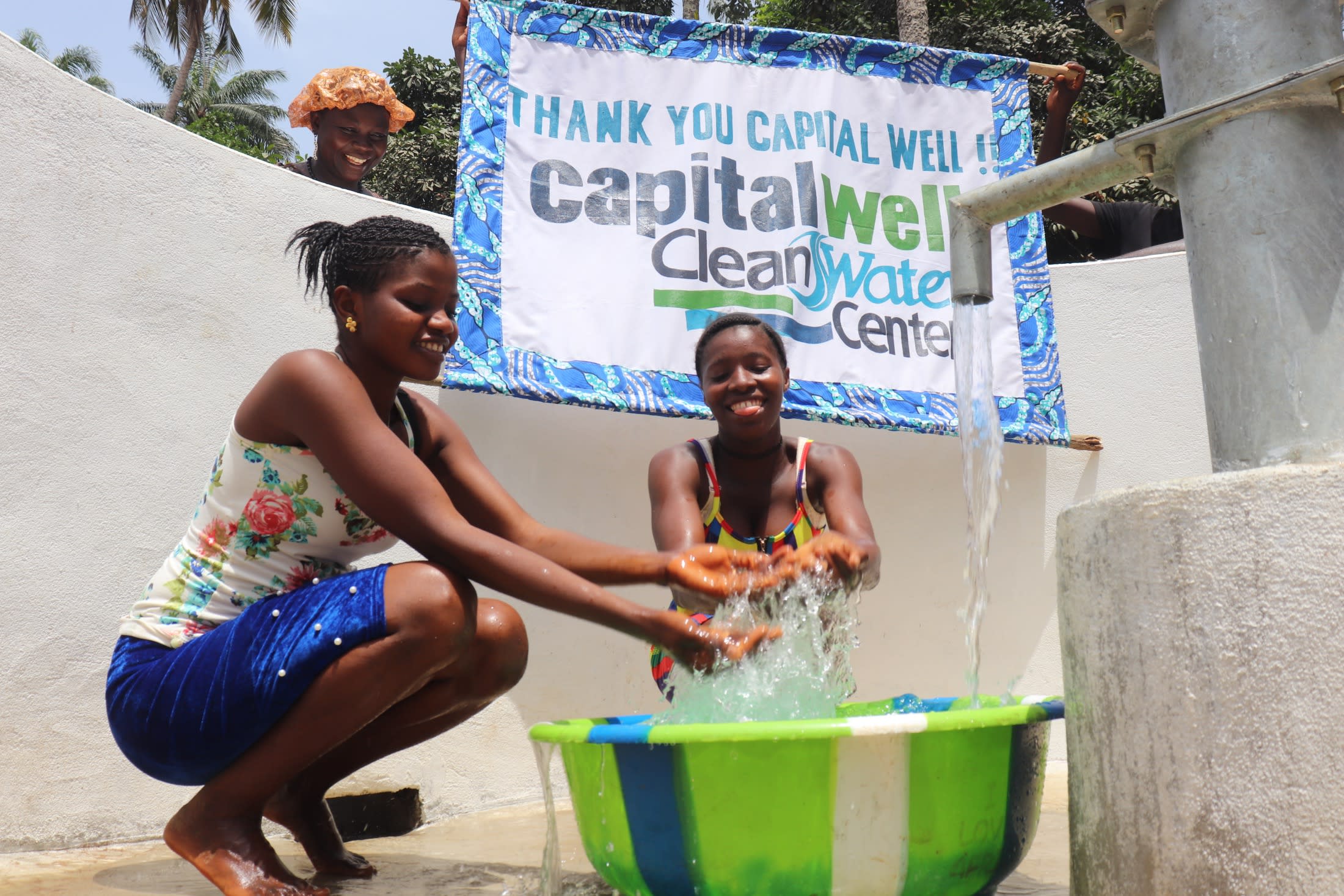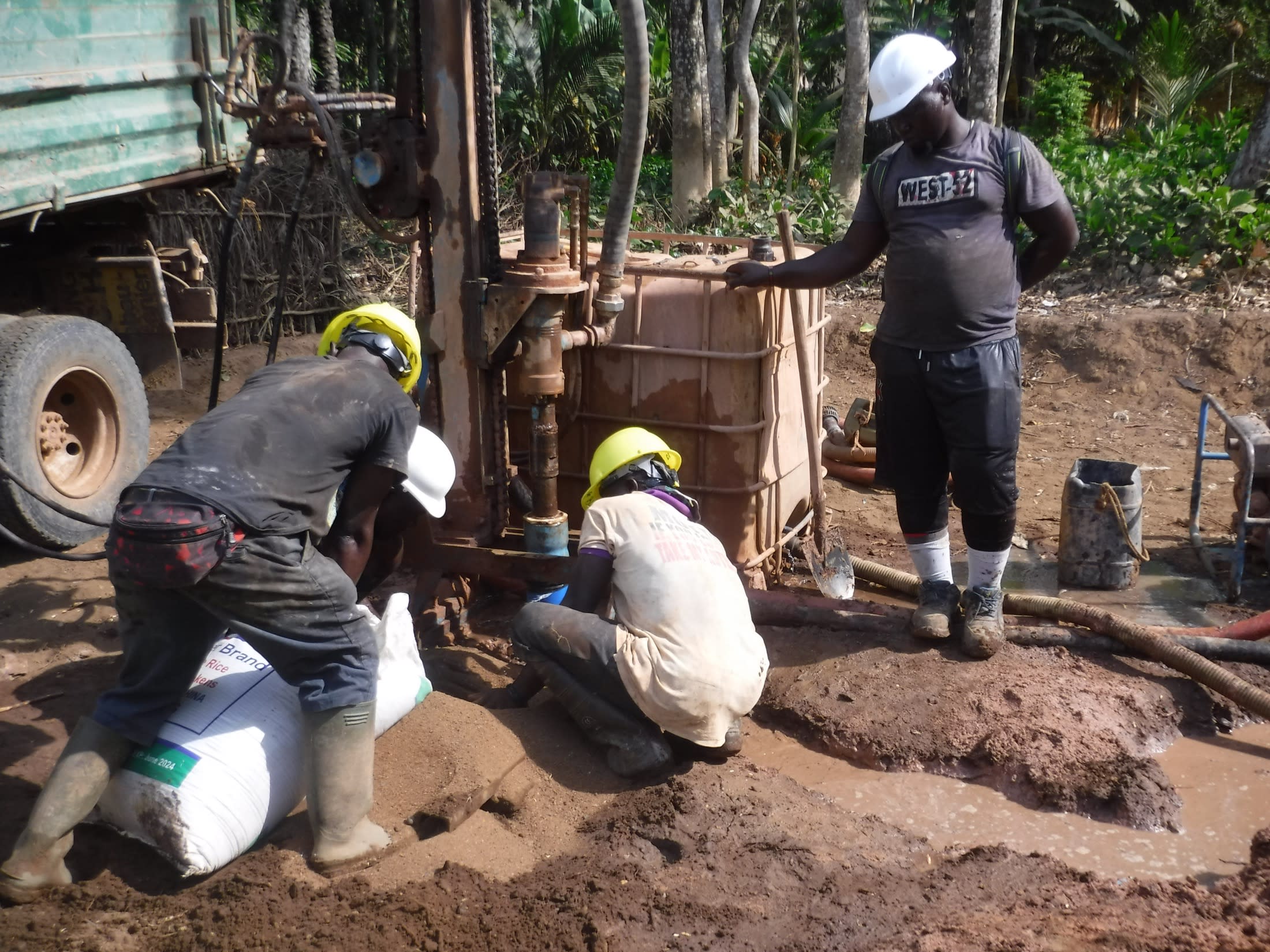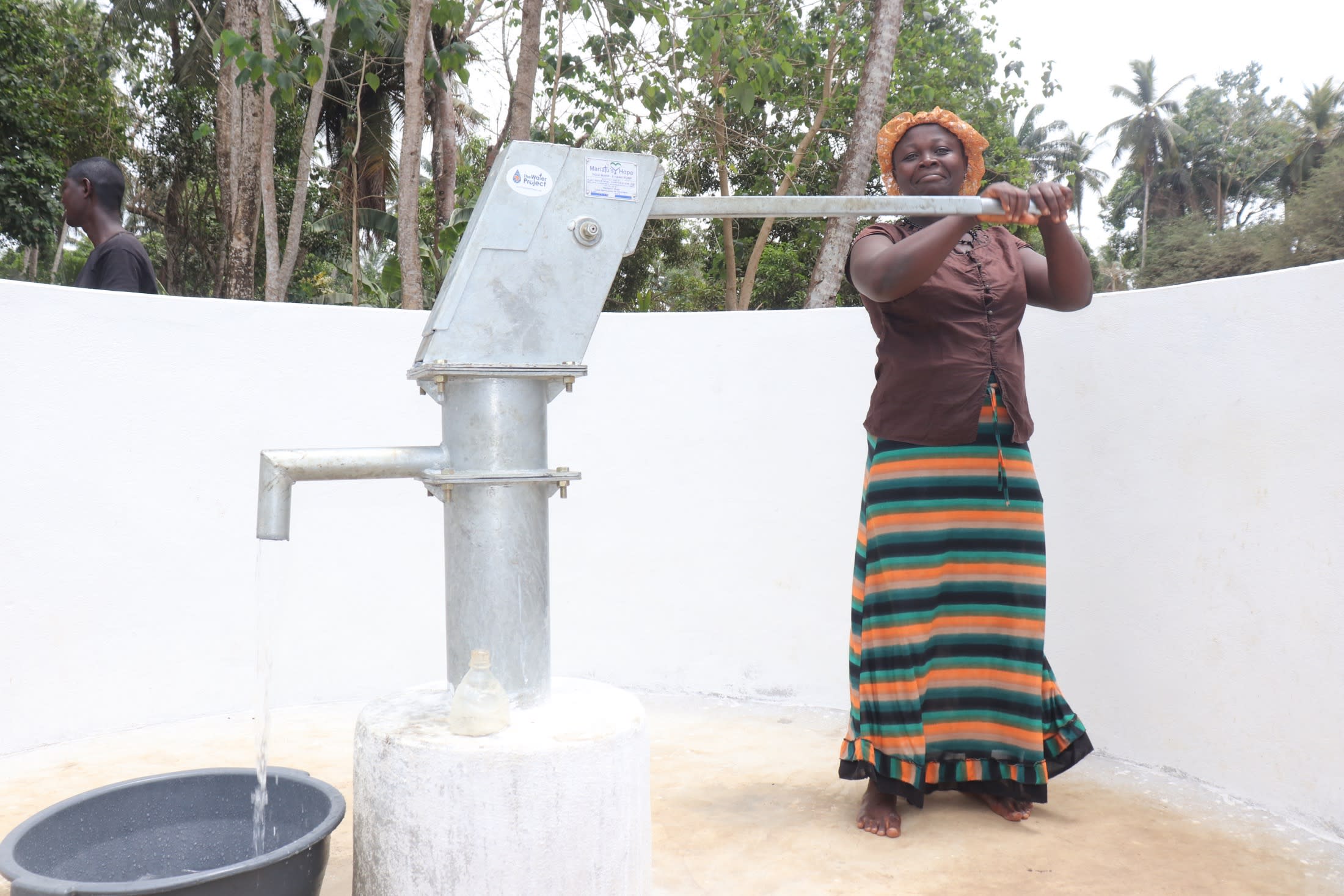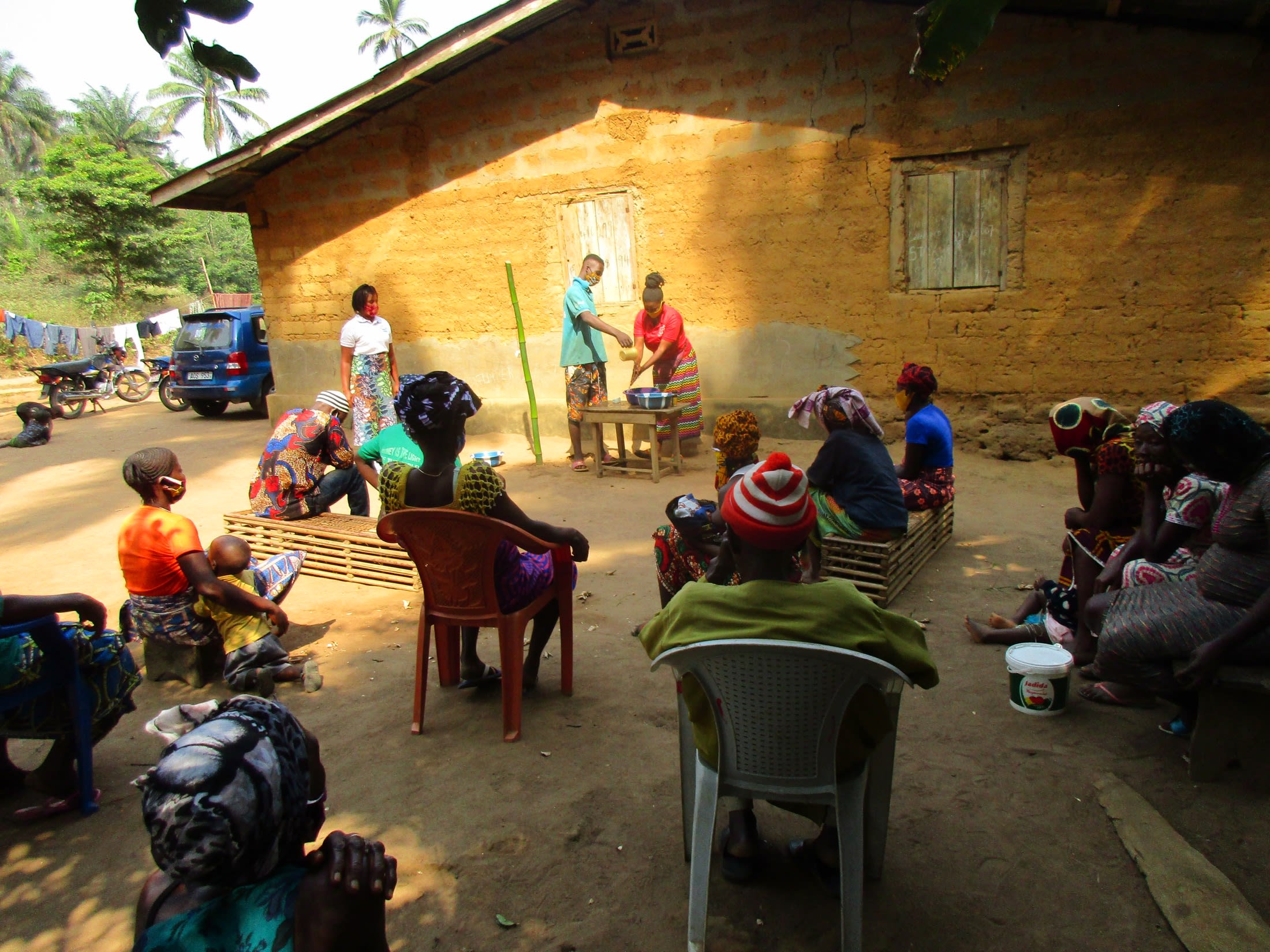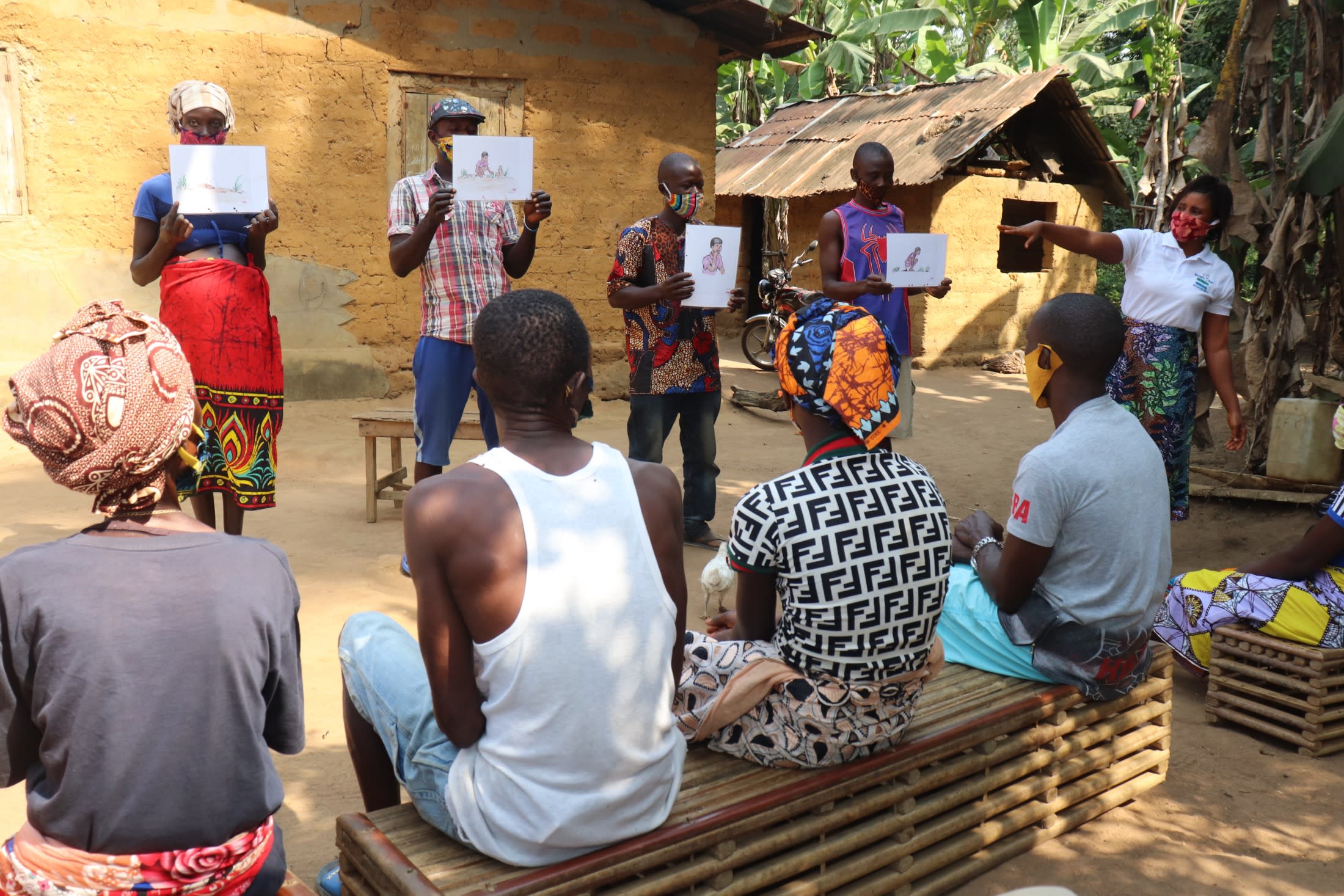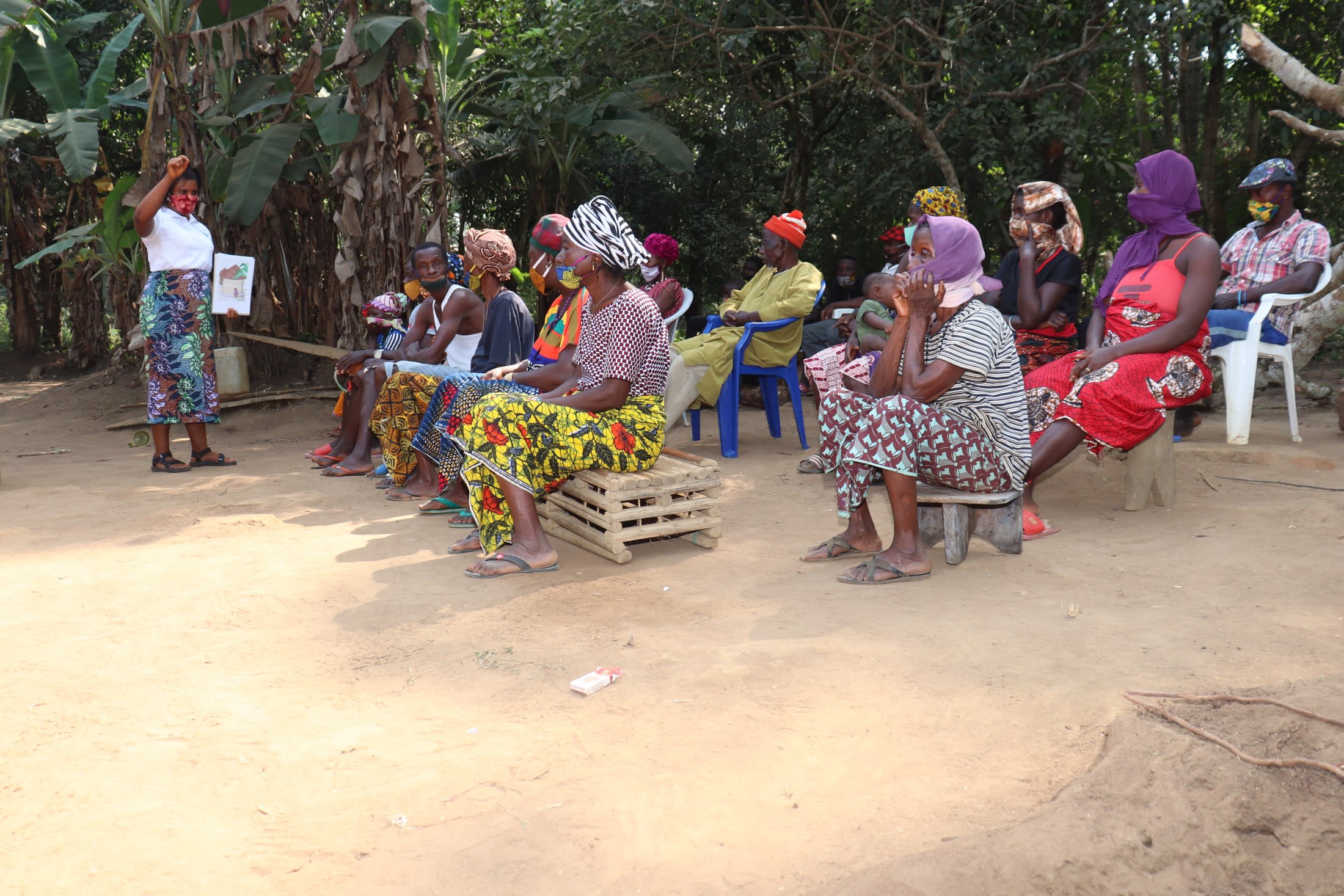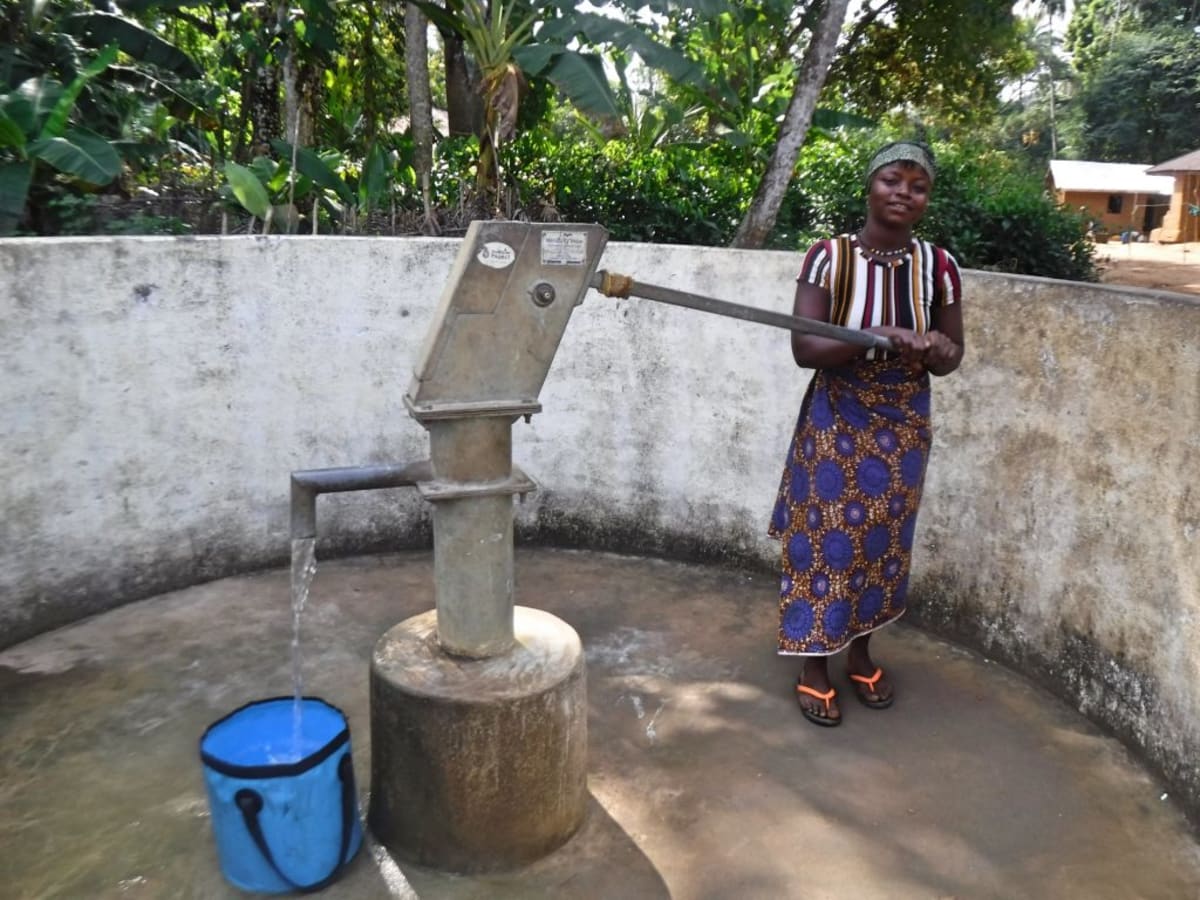Bompa Morie Village is home to more than 121 people, with houses lining either side of the main road. The roads are slightly bigger than footpaths but can only be used by one motorcar at a time. When two vehicles approach each other on the narrow road, one has to pull over into the bushes to allow passage for the other vehicle.
The village is lined with large trees, as it has been since the days of the community's founding members. The trees have formed a permanent shade that creates a cool environment for people escaping from the hot sun.
The most common livelihood here is dry-land farming. People plant crops such as rice and sesame seed, and they cultivating the locally available palm kernels into palm oil.
The time it takes to fetch water is a big hindrance for this community. The only well is located at the end of the community - leaving most people without a nearby water source. So, people decide to use the water from the stream since it is closer. Unfortunately, it still takes people more than 30 minutes to collect water, and the stream is prone to contamination leading to waterborne diseases. There have been reported cases of typhoid, cholera, diarrhea, dysentery, and skin diseases from people entering and drinking water from the stream.
The best time to fetch water from the stream is very early in the morning when there are not many people and the water is not yet disturbed. Since the distance from the village to the stream is far, women and children are also encouraged to do laundry and bathe at the stream. These activities, however, further pollute the water they must collect to drink back at home.
The dirty stream water is causing problems beyond community members' homes. The nearest secondary school, for example, is five miles away, a commute that most students from this area have to make on foot. The distance equates to a two-hour walk in each direction, which requires students to set out very early in the morning if they are to make it to class on time. But at home, children - and predominantly girls - are required to fetch water before leaving to do anything else that day.
So, with the trek required to the stream each morning, most girls find they cannot complete this chore and leave early enough to make it to school on time. This results in many secondary school-eligible girls dropping out after primary school. If the girls had an easier, faster way of collecting water at home, they would have a better chance of making it to school on time to continue their education in secondary school.
"I have asked politicians for years for help with a safe source of water, but nothing has been fruitful," said Pa Mamud Sesay, the village's Headman.
"I am tired of burying my young children and tired of one incident after another when the family goes to the stream."
What we can do:
New Well
We will be drilling is centrally located and will relieve many people of the long journey to fetch water. This project will relieve the people here of their water challenges.
Our team will drive over the LS200 mud rotary drill rig and set up camp for a couple of nights. Once the well is drilled to a sufficient water column, it will be cased, developed, and then tested. If these tests are positive, our mechanics will install a new India Mark II pump.
This community has been pushed to open contaminated well for their water. By drilling this borehole, Tholmossor Community will be provided with plenty of accessible clean drinking water.
Training
There will be hygiene and sanitation training sessions offered for three days in a row.
Community members will learn how to make a hands-free handwashing station called the "tippy tap." We will use these tippy taps for handwashing demonstrations and will also teach about other tools like dish racks and the importance of properly penning in animals. We will highlight the need to keep restrooms clean, among many other topics.
This training will also strengthen a water user committee that will manage and maintain this new well. They will enforce proper behavior and report to us whenever they need our help in solving a serious problem, like a pump breakdown.

 Borehole Well and Hand Pump
Borehole Well and Hand Pump
 Rehabilitation Project
Rehabilitation Project








